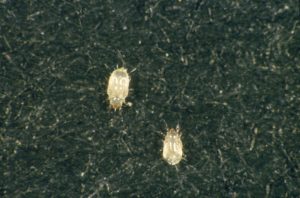 Booklice are small, almost microscopic insects that are grouped together in the insect order Psocoptera.
Booklice are small, almost microscopic insects that are grouped together in the insect order Psocoptera.
Booklice are very common in libraries, paper storage warehouses, packing and shipping warehouses that contain a lot of cardboard boxes, accounting and billing offices, large secretarial offices, and other places in which large quantities of paper are stored or used on a daily basis.
In houses, these small insects can be found infesting cereals, grits, flour, and grain in the kitchen or basement. They can be very common in the late summer when temperatures and relative humidity are high. The most favourable environment for booklice is one of high temperature and relative humidity.
These pests are found inside your food packages it is because it is too humid where you store your food. High humidity promotes mold growth in cereals and other stored food products, and this mold is what draws book-lice in. You can protect stored food by keeping them in sealed plastic containers and by keeping stored food areas dry.
Areas that have the most moisture will lure these pests in, areas such as basements, attics, closets, and other storage areas, which is why it is important to make sure that valuables stored in these areas are in sealed plastic totes.
Libraries often find the pest a real problem as they like to feed on the paste found in a book’s binding. Booklice also eat lichen and microscopic mould. They prefer the dark so will scuttle off if exposed to daylight and are often found in rooms where there is a lack of ventilation and light, such as kitchens. Most often they are found in cupboards and food, which can be very unpleasant.
Here are a few pieces of evidence:
Bedbugs, book lice temporarily close downtown branch of Lynchburg Public Library
Alissa Smith, The News and Advance │Nov 28, 2017
The downtown branch of the Lynchburg Public Library closed Tuesday afternoon due to a case of bedbugs and book lice, Library Director Marilyn Martin said.
The pests were confined to the new book area and traced to a single book, which was immediately bagged, Martin said. She declined to name the book’s title to preserve the renter’s privacy.
“Any public building that has people in and out has problems with lice, fleas, bedbugs, all kinds of things,” she said.
Meet The Tiny Critters Thriving In Your Carpet, Kitchen And Bed
Josh Cassidy, NPR │May 11, 2016
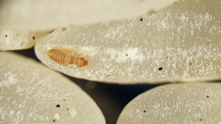 A recent study published in the journal PeerJ took up the challenge of cataloging the large numbers of tiny animals — arthropods — that live in modern human dwellings. In 50 houses in and around Raleigh, N. C., the research team found about a hundred different species of arthropods in each home. The tally included familiar types — like flies, spiders and ants — but also some species that are less well known, such as gall wasps and book lice.
A recent study published in the journal PeerJ took up the challenge of cataloging the large numbers of tiny animals — arthropods — that live in modern human dwellings. In 50 houses in and around Raleigh, N. C., the research team found about a hundred different species of arthropods in each home. The tally included familiar types — like flies, spiders and ants — but also some species that are less well known, such as gall wasps and book lice.
As booklice are resistant to pesticides, they do not get affected by the pesticides.
In order to keep the booklice away we do require a strong result and for this, our product Combirepel™ manufactured by C Tech Corporation is an anti-insect aversive which repels insects.
Combirepel™ works on the mechanism of repellency. It temporarily inhibits the mating cycle of the insects. The product impairs the ability of the insects to reproduce, that is the insects will not lay eggs or the laid eggs will be infertile. The product causes feeding disruption in an insect by triggering an unpleasant reaction within the insect which might try to feed on the application.
The product temporarily blocks the reproduction system of the insects by hindering the release of the vital hormones for growth.
Combirepel™ is an extremely low concern, low toxic, low hazard, non-carcinogenic and non-mutagenic insect aversive. It does not kill or cause harm to insects as well as to the environment which indirectly helps to maintain the ecological balance.
Combirepel™ available in the form of the liquid concentrate can be mixed with paints and organic solvent in a predetermined ratio and be applied on the structure interior and exterior, ceiling, panels, so as to be protected from booklice.
Our product in the lacquer form can be applied topically to the applications. The lacquer is compatible with the surfaces wood, concrete, metal, polymer, ceramic, cables, wires which are already installed etc.
Our product in the form of wood polish additive can be mixed with wood polish and applied on the shelves, cupboard, doors, tables, chairs, and other wooden furniture to keep the booklice away from the application.
Our newly developed product in the form of a spray can be sprayed by anyone. It can be sprayed near the wooden articles, entrances, doors and windows, etc.
Combirepel™ is EU – BPR, RoHS, RoHS2, ISO, REACH, APVMA, BPR, NEA compliant and FIFRA exempted.
Contact us at technical.marketing@ctechcorporation.com to keep the pests away.
Also, visit our websites:
http://www.ctechcorporation.com/
http://www.rodrepel.com/
http://www.termirepel.com/
http://www.combirepel.com/
Follow our Facebook pages at:
1] https://www.facebook.com/Combirepel-411710912249274/
2] https://www.facebook.com/Termirepel-104225413091251/
3] https://www.facebook.com/Rodrepel-120734974768048/
Follow us on our Twitter pages at:
1] https://twitter.com/rodrepel
2] https://twitter.com/termirepel
3] https://twitter.com/combirepel

 You might be thinking, “Mice are tiny! How could they cause so much damage? The same can be said for rats, squirrels and other rodents. Don’t let appearances fool you. Mice and other rodents might seem sweet and innocent, but the reality is the damage they can do to your home can be significant and costly.
You might be thinking, “Mice are tiny! How could they cause so much damage? The same can be said for rats, squirrels and other rodents. Don’t let appearances fool you. Mice and other rodents might seem sweet and innocent, but the reality is the damage they can do to your home can be significant and costly.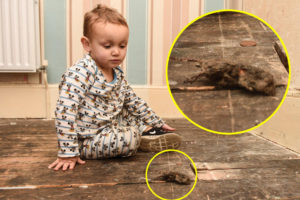 Carla Hazlett, 41, claims they have chewed her possessions and left droppings and urine all over her children’s clothes.
Carla Hazlett, 41, claims they have chewed her possessions and left droppings and urine all over her children’s clothes.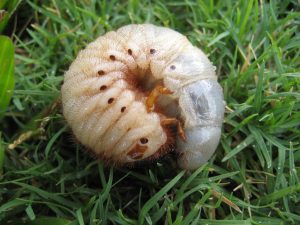

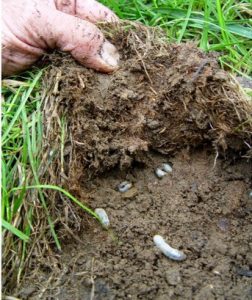
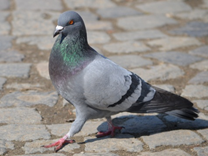 Those fine-feathered ‘peeping’ chicks which move in and take over all sorts of property are terribly annoying and cause serious problems. Yes, the pigeons ofcourse!
Those fine-feathered ‘peeping’ chicks which move in and take over all sorts of property are terribly annoying and cause serious problems. Yes, the pigeons ofcourse! The acidic quality of pigeon droppings can eat away your car’s paint, causing significant and costly damage to your automobile. Anyone who has ever experienced pigeon “poop” on their car, home, or clothing, can tell you, it’s difficult to remove. Tar-like and heavy pigeon droppings are not like any other bird waste. The purpose for their durable dung is to keep their nests intact for the nesting season. In short, their droppings act as a binding agent, much like mortar to bricks.
The acidic quality of pigeon droppings can eat away your car’s paint, causing significant and costly damage to your automobile. Anyone who has ever experienced pigeon “poop” on their car, home, or clothing, can tell you, it’s difficult to remove. Tar-like and heavy pigeon droppings are not like any other bird waste. The purpose for their durable dung is to keep their nests intact for the nesting season. In short, their droppings act as a binding agent, much like mortar to bricks. The damage the bird’s fouling causes to historic buildings and monuments can be extensive. Apart from the obvious unsightliness, the main problem is acids released from their droppings. These can cause unrepairable damage to building surfaces resulting in damaging the appearance, the scarring of building structure and, potentially, causing thousands of pounds worth of damage.
The damage the bird’s fouling causes to historic buildings and monuments can be extensive. Apart from the obvious unsightliness, the main problem is acids released from their droppings. These can cause unrepairable damage to building surfaces resulting in damaging the appearance, the scarring of building structure and, potentially, causing thousands of pounds worth of damage.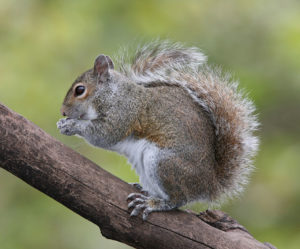 Rodents have a ubiquitous presence and are a nuisance to us. Rodents like squirrels, rats are notorious. They have a pair of incisors which grow throughout their life. Hence to keep them in check they constantly chew on anything they find hard like our wires and cables. They not only damage our wires and cables but they also affect the equipment at the power station.
Rodents have a ubiquitous presence and are a nuisance to us. Rodents like squirrels, rats are notorious. They have a pair of incisors which grow throughout their life. Hence to keep them in check they constantly chew on anything they find hard like our wires and cables. They not only damage our wires and cables but they also affect the equipment at the power station.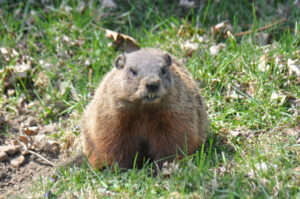 They feed on green vegetables. They dine on beautiful flowers. They burrow holes in the ground.
They feed on green vegetables. They dine on beautiful flowers. They burrow holes in the ground. Swamp rats also known as orange-toothed species, coypu and nutria are the water-loving rodents that inhabit banks of rivers, lakes, lagoons, marshes, and swamps.
Swamp rats also known as orange-toothed species, coypu and nutria are the water-loving rodents that inhabit banks of rivers, lakes, lagoons, marshes, and swamps. Swamp rats breed quickly and the breeding is continuous throughout the year. Besides breeding quickly the Swamp rats consume a large amount of vegetation. They feed yearly on plants including grasses, sedges, reeds, water parsnip, and even water lilies.
Swamp rats breed quickly and the breeding is continuous throughout the year. Besides breeding quickly the Swamp rats consume a large amount of vegetation. They feed yearly on plants including grasses, sedges, reeds, water parsnip, and even water lilies. Rodents are a great threat to farmers as they destroy one percent of the world’s cereal crops on an annual basis. Rodents are the consumers of vitamin and protein-rich foods and often fed on crops embryo, stripping away germination capabilities and nutrients in the process. Rodents are notorious for contaminating food supplies, and one of the primary targets is grains.
Rodents are a great threat to farmers as they destroy one percent of the world’s cereal crops on an annual basis. Rodents are the consumers of vitamin and protein-rich foods and often fed on crops embryo, stripping away germination capabilities and nutrients in the process. Rodents are notorious for contaminating food supplies, and one of the primary targets is grains. Like the above-mentioned cases, there are many cases of rodent attacks on farms causing severe damage to crops and its productivity. Entomologist said 4.6 to 54% paddy crops were lost due to rat infestation. Rodent attack damage as much as 55% of horticultural crops. The extent of stored grain losses depends upon the distribution, abundance, and species composition of the rodent population involved.
Like the above-mentioned cases, there are many cases of rodent attacks on farms causing severe damage to crops and its productivity. Entomologist said 4.6 to 54% paddy crops were lost due to rat infestation. Rodent attack damage as much as 55% of horticultural crops. The extent of stored grain losses depends upon the distribution, abundance, and species composition of the rodent population involved.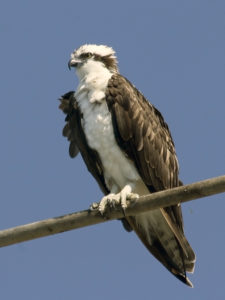 Birds are a major problem for utilities. They collide with overhead structures and conductors, they are electrocuted, and damage facilities leading to customer interruptions.
Birds are a major problem for utilities. They collide with overhead structures and conductors, they are electrocuted, and damage facilities leading to customer interruptions.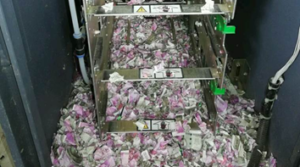
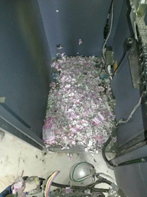
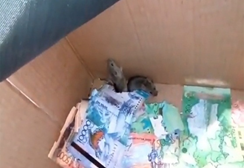 A pair of mice snuck into an ATM in the Kazakh capital Astana, hiding from a snow storm. Bank workers were surprised when they discovered the tiny intruders and the ruined notes they had munched on during their stay.
A pair of mice snuck into an ATM in the Kazakh capital Astana, hiding from a snow storm. Bank workers were surprised when they discovered the tiny intruders and the ruined notes they had munched on during their stay.